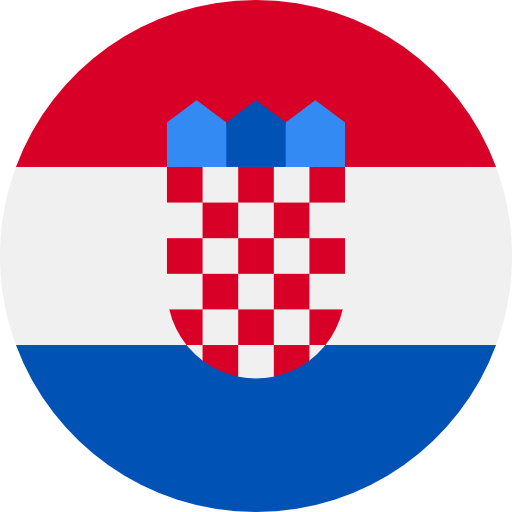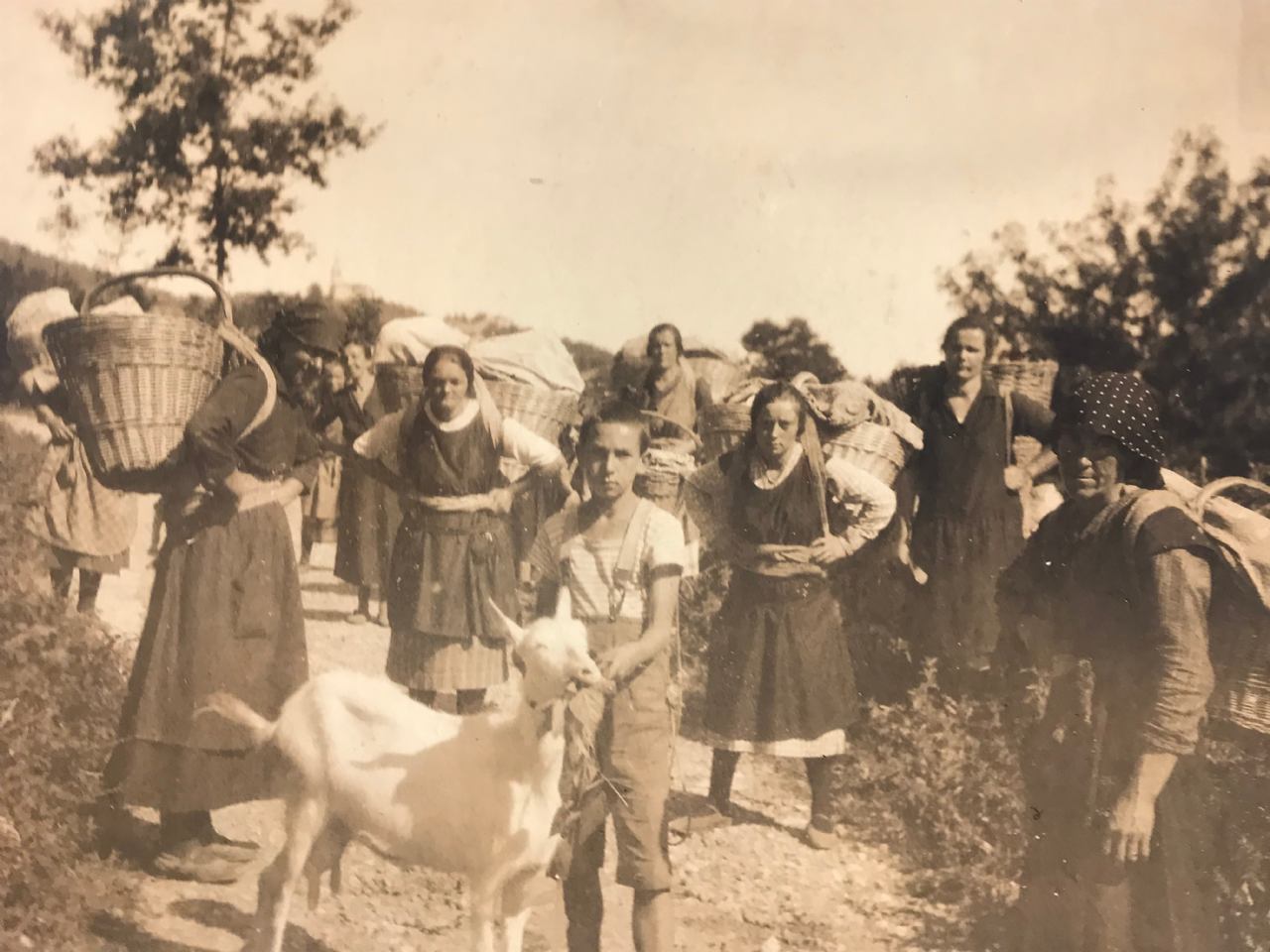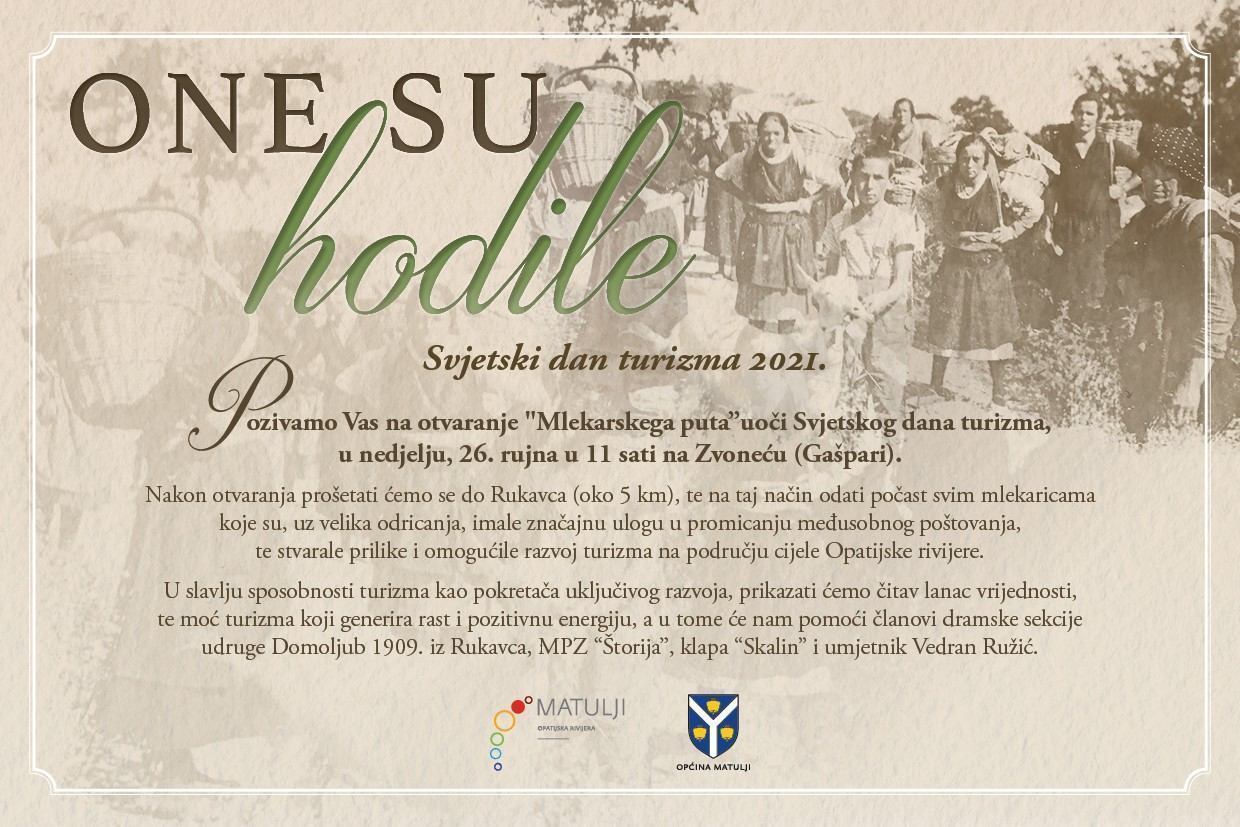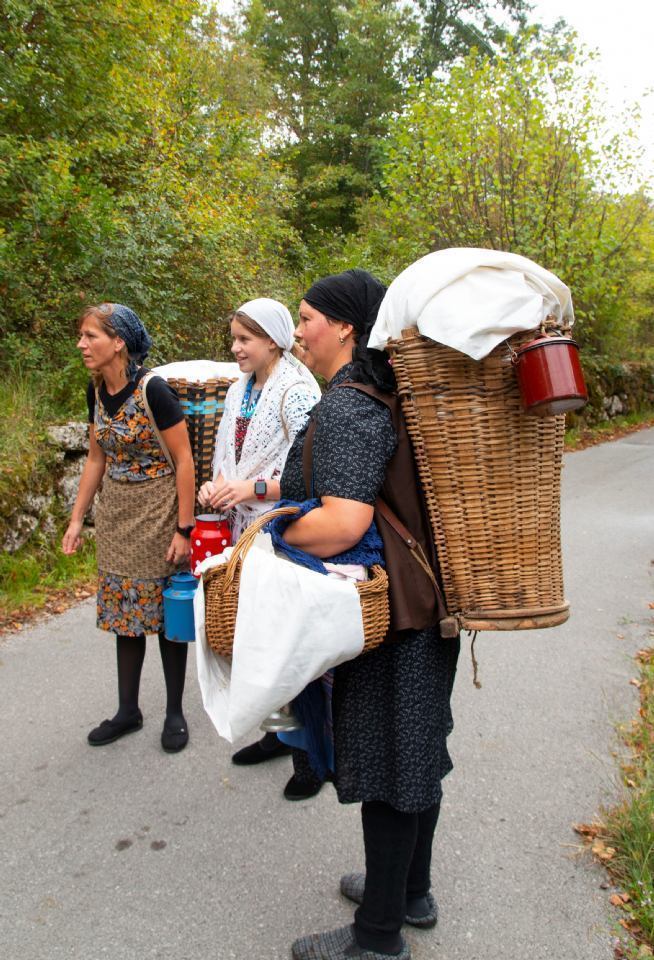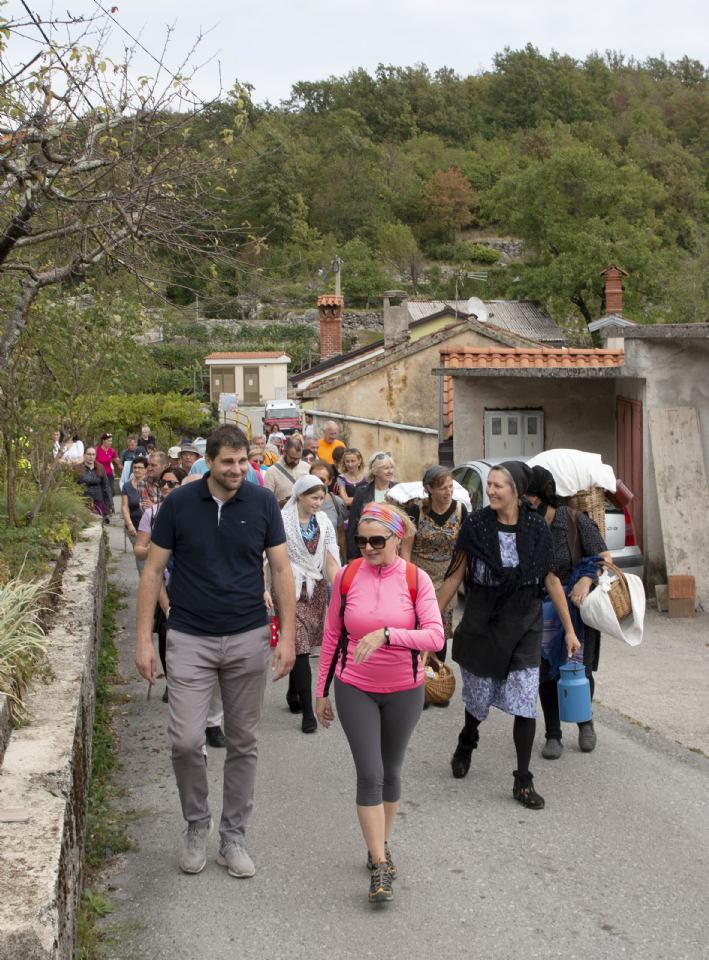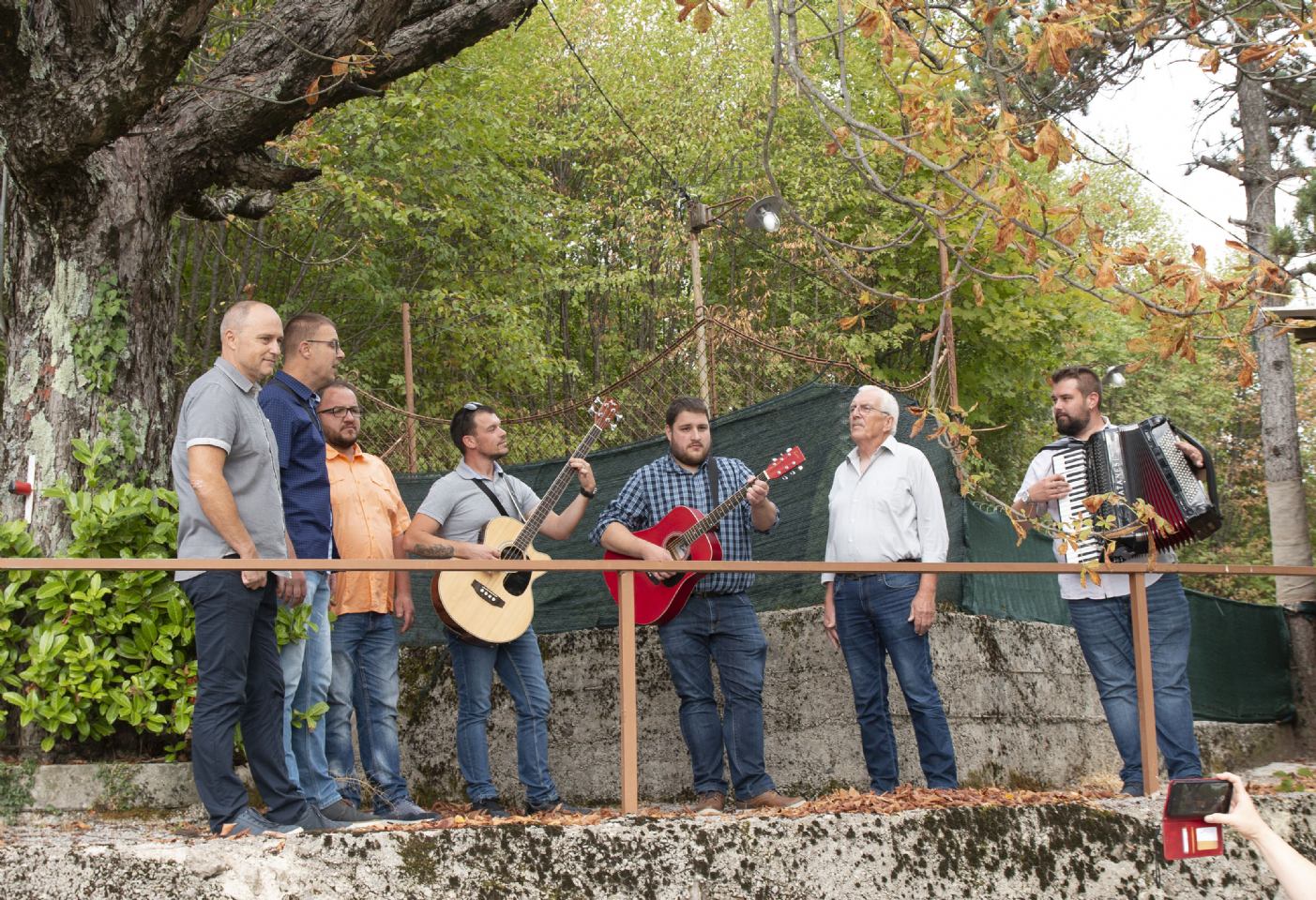One su hodile
In the past, all people lived hard and constantly burdensome lives, but the dairy women who delivered milk suffered more than most. Every morning before five o’clock, they would load a basket with thirty to forty litres of milk onto their backs and carry their load to Opatija, in order that the well-to-do would have fresh milk for their breakfasts. Mlekarice could not adjust their schedule according to the weather: in rain and snow, through mud and ice, on Sundays and holidays they trudged downhill, because Opatija simply could not do without milk.
The mlekarice had their regular delivery addresses where they would pour the milk into vessels left outside for them, so as not to wake the household should they still be sleeping peacefully. The milk was paid for at the end of the week or at the end of the month. Some mlekarice walked the same arduous route day after day, year after year, for more than forty years, until they were finally exhausted and weakened.
Their work did not come to an end once the milk had been delivered to Opatija. When they returned home, before noon, they often found another burden waiting for them. After taking off the basket and having something to eat, they would load up once more, to carry lunch to field labourers or – in summertime – to the haymakers in Draga, at the hottest time of the day. During the winter, they walked mostly in darkness. If the moon was full, its light would help them: if not, they had to light their way with small oil lanterns. If there was no wind, they somehow succeeded; otherwise, the lantern would constantly go out, and relighting it was very difficult, particularly if it was raining as well as windy. Mlekarice who had no lantern would take a live coal from the hearth and walk with that until they met up with other women. And we have not even mentioned how it was in ice and snow...


